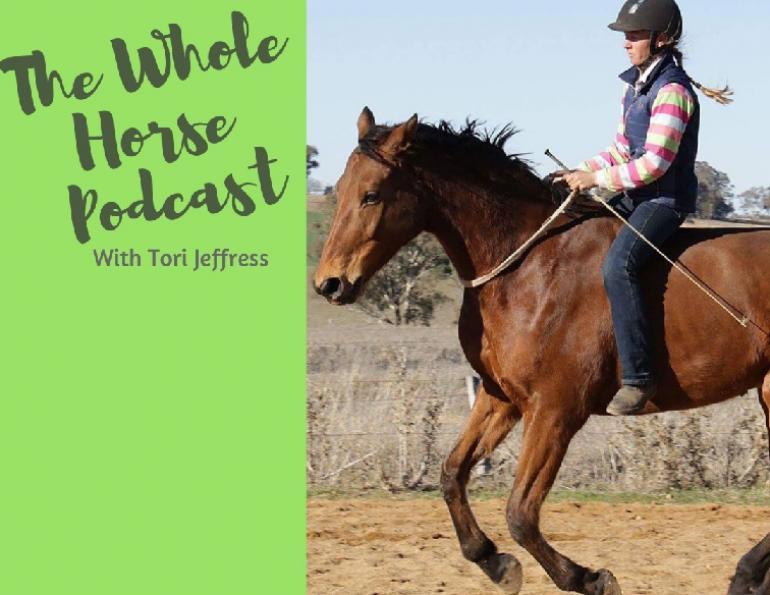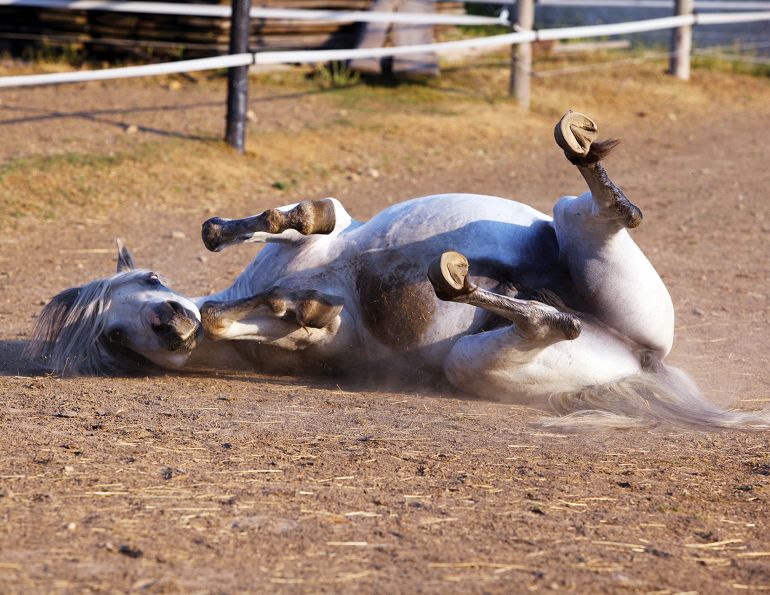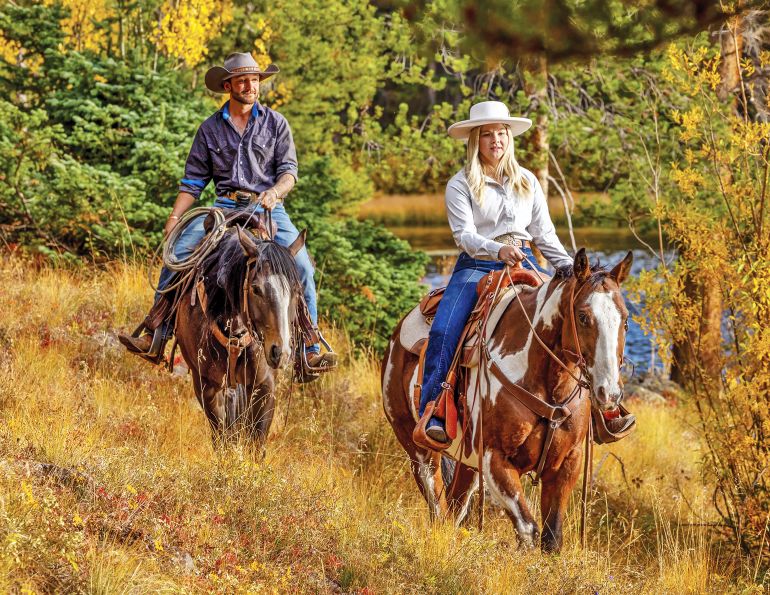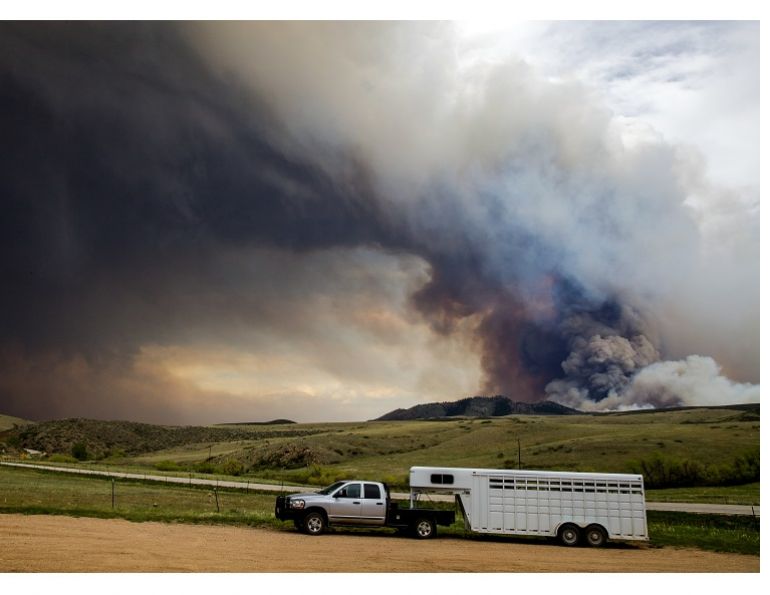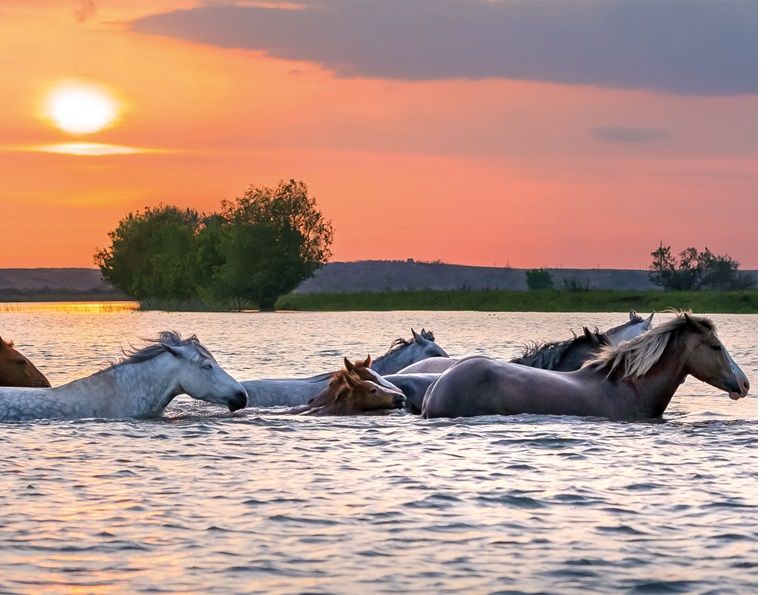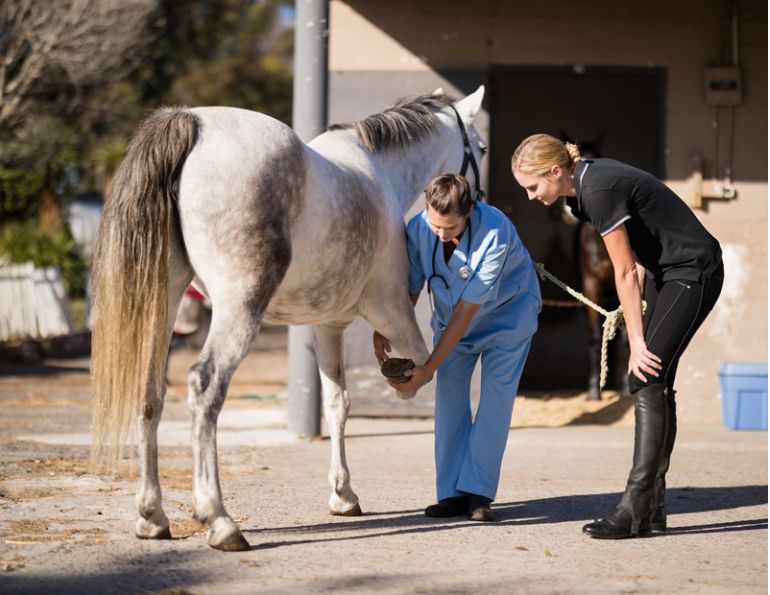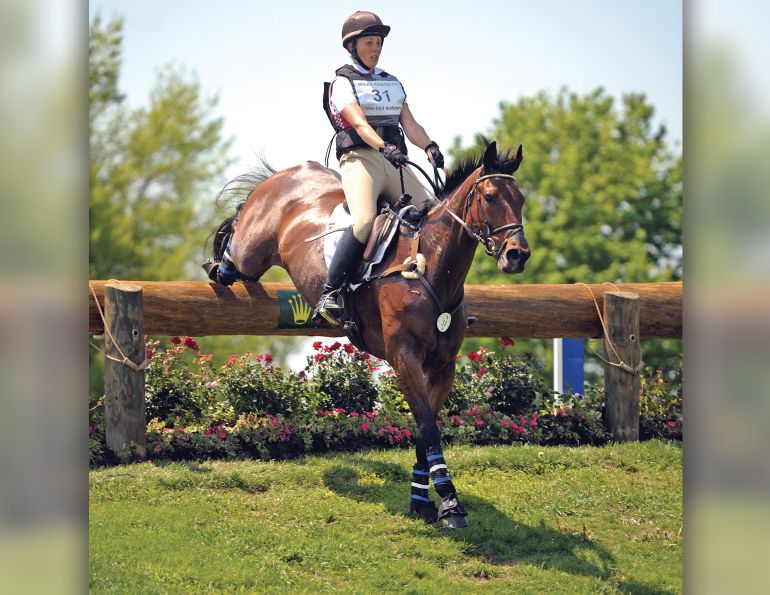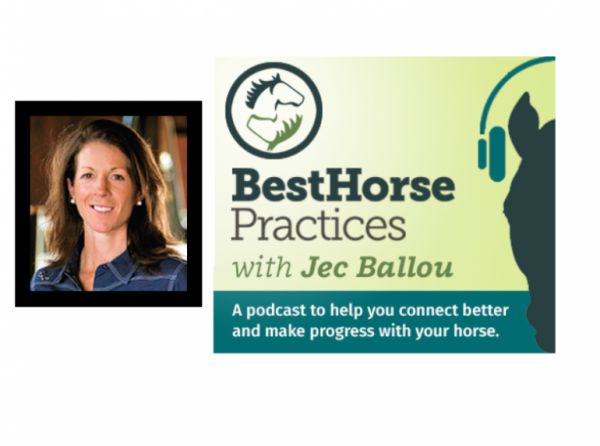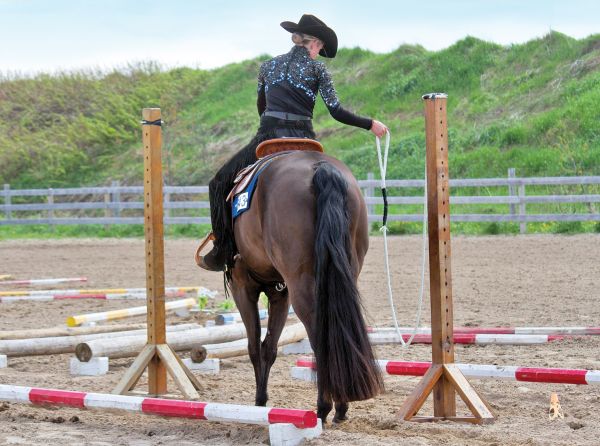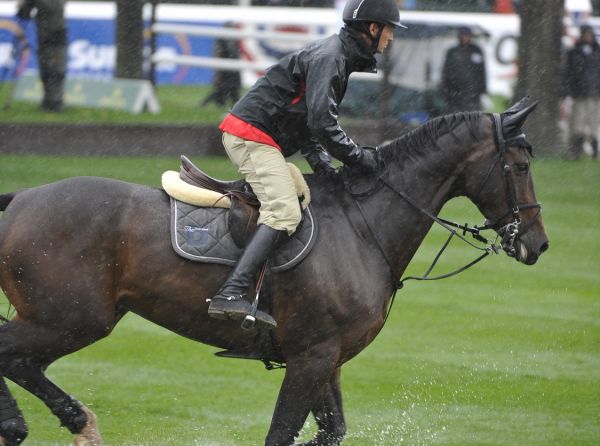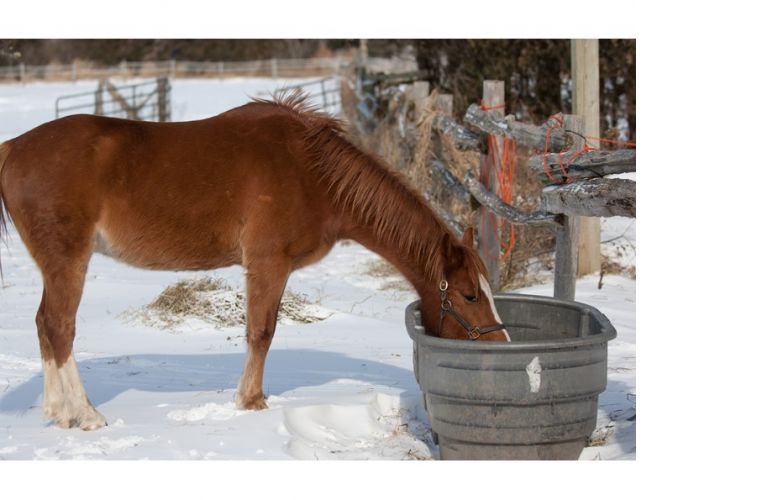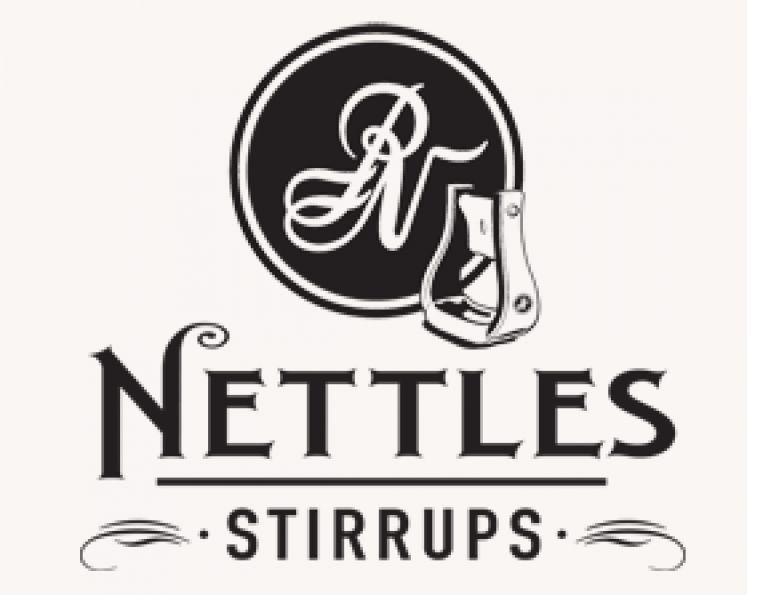Plan ahead and know what to do when the unexpected happens.
By Crystal Lee, DVM, DACVS, Burwash Equine Services
If you own horses, you will experience an emergency with them at one point or another. Whether it’s a pawing, painful, thrashing gelding showing signs of colic or a mare who came up suddenly lame because she stepped on a nail during your trail ride, it is important that you know what to expect and what to do.
Colic is the most common emergency that horses experience and that equine veterinarians treat. Although less than 10 percent of all colics are severe enough to require surgery or result in the death of the horse, it can be very difficult (if not impossible) to know at the onset of the emergency which direction things will go.
A horse experiencing signs of colic will be disinterested in feed, and will potentially show signs of abdominal pain such as pawing, looking at their flank, and rolling. Less commonly known signs include stretching out as if to urinate, inappropriate sweating, and depression. The range of causes of colic can include anything from a buildup of gas in the intestines to the death of certain sections of the intestines resulting from the loss of the blood supply to those intestines.
Related: Barn Safety Tips: Plan Ahead to Improve Your Chances of a Positive Outcome
A veterinarian treating a colic will be looking to ascertain what might be causing the colic signs to determine how best to treat the problem. Most often, the veterinarian will perform a rectal exam. This allows them to palpate portions of the abdomen to feel gas or fluid-distended intestines, intestines impacted with feed material, or intestines displaced within the abdomen. The veterinarian will usually also pass a stomach tube to see whether there is any intestinal reflux that flows out of the stomach through the tube. Horses with obstructions or inflammation of their small intestine will have the fluid from the small intestine back up into the stomach, causing reflux. Since horses can’t vomit, it is essential to release the fluid from their stomach with the stomach tube so that their stomach doesn’t rupture.
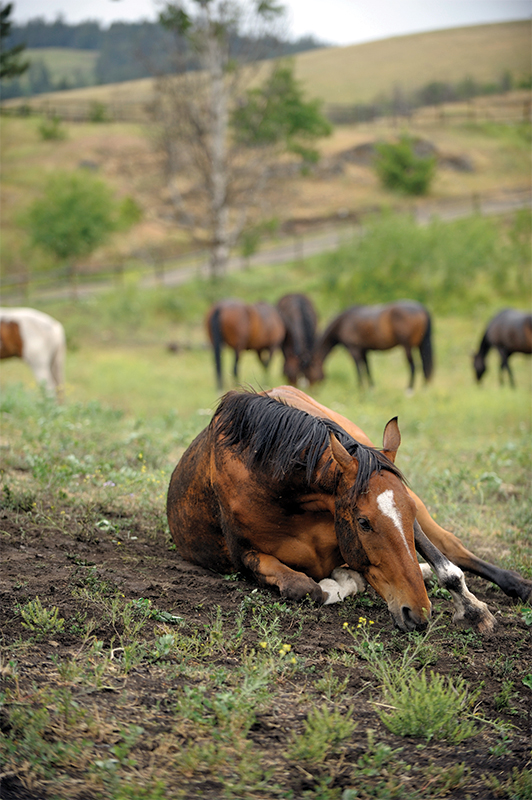
Common signs of colic include pawing, looking at their flank, and rolling. Photo: Clix Photography
Sometimes, colic can be treated on-farm with a dose of pain medication and withholding feed. Sometimes, intravenous fluids and repeated sedation are necessary. Less commonly, surgery becomes necessary to remove feed impactions, replace displaced intestines where they belong, or remove dying portions of intestine.
Wounds are another very common emergency for all types of horses. Some large wounds require extensive suturing, and some heal better without suturing. Some tiny wounds are not a big deal, and others are puncture wounds that have introduced infection to a joint and can prompt arthroscopic surgery and intensive care. The best thing to do when your horse gets a wound is to have a veterinarian determine what structures may be affected so that the best treatment plan can be made.

Puncture wounds are a common emergency with horses and should be assessed by a veterinarian to determine the treatment plan. Photo: Clix Photography
Did you know that if your horse is “choking” it does not mean they are unable to breathe? Horses can get feed material obstructing their esophagus (the tube between their throat and their stomach), which we refer to as “choke.” It does not affect their airway (they can still breathe), but it can still be very distressing, and if not quickly resolved, can lead to pneumonia if they inhale feed particles. Horses with “choke” will often have feed material and saliva draining out of their nostrils and will be unable to eat. Your veterinarian will administer sedation and pass a stomach tube up to the obstruction to resolve it by lavaging it with water.
Related: Horse Trailer Accidents on the Road
Have you ever thought about what you would do if you were picking out your horse’s foot and there was a nail embedded in it? Would you get pliers and yank out the nail? It’s very important to know that the right answer is to leave the nail where it is and get a veterinarian out to take an x-ray. If we take an x-ray while the nail is still in place, we can know exactly which structures inside the foot may have been affected and make a plan to treat them. Inside the horse’s foot, a nail can cause infection in the coffin bone, the deep digital flexor tendon, the navicular bursa, the coffin joint, the flexor tendon sheath, and many other structures. Without the x-ray, it is sometimes difficult to know whether the nail was a life-threatening issue warranting surgery or a minor superficial problem.

An abdominal ultrasound exam during an emergency colic workup. Photo: Burwash Equine Services
If you decide that you would like your mare to have a foal, did you know that foaling quickly becomes an emergency if the foal is not born within 30 minutes? If you are foaling your mare out at your place and not at a veterinary hospital, you need to have a plan for how to monitor her for foaling and for what you will do if the foal is not positioned normally. In many circumstances, it will take too long for a veterinarian to drive to your farm to be able to save the life of the foal, and the veterinarian may advise you over the phone on ways that you can try to assist your mare. Often, the best thing you can do if you are not able to quickly assist your mare yourself is to put her on a trailer and start driving to a veterinary clinic, where delivering the foal with the mare under anesthesia is an option. Overall, these are not options to figure out once the mare is having problems; if you decide to foal out a mare at home, have a discussion with your veterinarian about the best contingency plans in case of an emergency.
Related: Equine Lameness Evaluation
It is also worth knowing that foals themselves can become an emergency very quickly. If a young foal develops sepsis (an infection throughout their body), it needs to be treated as quickly as possible to save the foal’s life and prevent life threatening complications. Any time a foal shows lethargy, fever, swelling of a joint, or lameness, they should be evaluated as soon as possible by a veterinarian.
Diarrhea (in either a foal or an adult horse) can also quickly become an emergency. Horses can lose a lot of fluid and become dehydrated quite quickly when they develop colitis. Often, this is from a contagious cause, and the horse needs to be isolated during treatment.
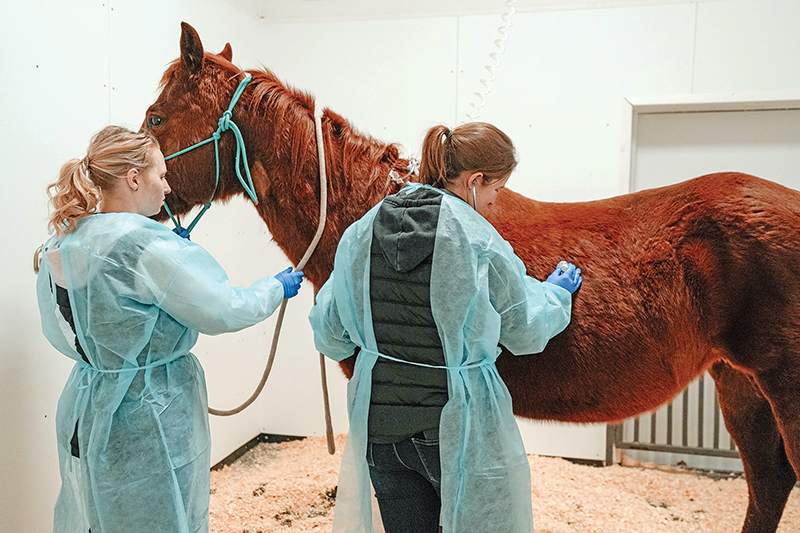
A physical exam is done in isolation facilities on a potentially contagious upper respiratory case. Photo: Burwash Equine Services
It’s in circumstances such as those described above that you need to be an advocate for your horse. If you have taken the time to prepare for an emergency to happen, it’s much more likely that you will have a successful outcome when it does.
Do you have a relationship with a local veterinary clinic that provides emergency services? There is a shortage of veterinarians in North America right now, and an even more acute shortage of equine veterinarians in many parts of the country. Along with this, some equine veterinarians are setting boundaries by only providing emergency care to active clients, only providing emergency care at certain times of the day, or referring all after-hours emergencies to a referral hospital. If the veterinarian who looks after your routine veterinary care will not be available in an emergency, do you know who they recommend you call?
Related: Road Safety for Equestrians

A nasogastric tube is passed down into the stomach to assess for reflux and administer fluids. Photo: Burwash Equine Services
If you don’t have a relationship with a veterinary clinic, the time to establish one is before an emergency ever arises. You should know exactly who you are going to call in an emergency, and how to reach them. When you’re making decisions during a crisis, it is very helpful if you have some degree of trust in the professional helping you make those decisions. As well, it can be extremely helpful for the veterinarians treating your emergency to have all the previous medical history on your horse. From a financial perspective, many veterinarians have instituted a cost differential for non-client after-hours fees compared to the after-hours fees for their regular clients.
Have you looked into whether equine insurance is right for you and your horses? Many people haven’t even thought about insurance as an option but having it might make the difference between being able to treat an emergency such as a surgical colic or an infected joint and having to euthanize the horse. When you compare the coverage on offer by different companies, understand what they are offering so you are comparing apples-to-apples. Many times, people think they have medical coverage for their horse when they truly only have mortality insurance, or even only liability insurance. Know what type of insurance you have and choose a company for medical insurance that will cover diagnostic tests so that you are able to get all the available information needed to make the best choice to treat your horse.

An abdominal tap is done to assess the peritoneal fluid during the workup of a colic that may need surgery. Photo: Burwash Equine Services
Do you have a plan for how to cover the costs of emergency medical care for your horses? Even if you do have medical insurance, veterinary bills often need to be covered before you are reimbursed by the insurance company, which can be several months down the road. If you don’t have medical insurance, you should establish an emergency fund so that you are able to make decisions that you feel are right for your horse in an emergency without being strictly limited financially.
Do you have a way to reliably transport your horse in an emergency? It is incredibly stressful to need emergency transport and not be able to find it. If you don’t own a trailer, make sure you have a plan for who you can call to help in an emergency. If you do own a trailer, make sure it’s in good repair and available for use. Although many emergencies can be treated in the field, there are many emergencies that can only be effectively managed in a hospital situation: colic requiring surgery, infected joints requiring arthroscopy, and horses with colitis requiring intravenous fluids and intensive care are just a few examples. As well, depending on where you live, it is becoming more difficult to find reliable emergency care on-farm, and some veterinarians provide haul-in care only after hours.
Have you practiced trailering if your horse isn’t often hauled? If your horse needs to be hauled to a referral hospital with a fractured leg, it’s not a good time to be teaching trailering. You need to make sure your horse is trained to load in a timely fashion, both for the horse’s safety and your own.
Is your horse trained to be safe to work around? This becomes even more important in an emergency when being able to safely and efficiently give injections and work around the hindlimbs can mean the difference between life and death for that horse.
Horses are flight animals and can injure themselves in a situation where you couldn’t imagine that they could. They can also get very sick very quickly and need definitive veterinary care to survive. Taking the time to think about worst case scenarios and having a plan in place for how you would deal with them is one of the best things you can do to ensure a successful future for you and your horses.
Related: A Miraculous Ending to a Terrible Accident
Related: Biosecurity for Horse Owners
Main Photo: Dreamstime/Marian Vejcik





